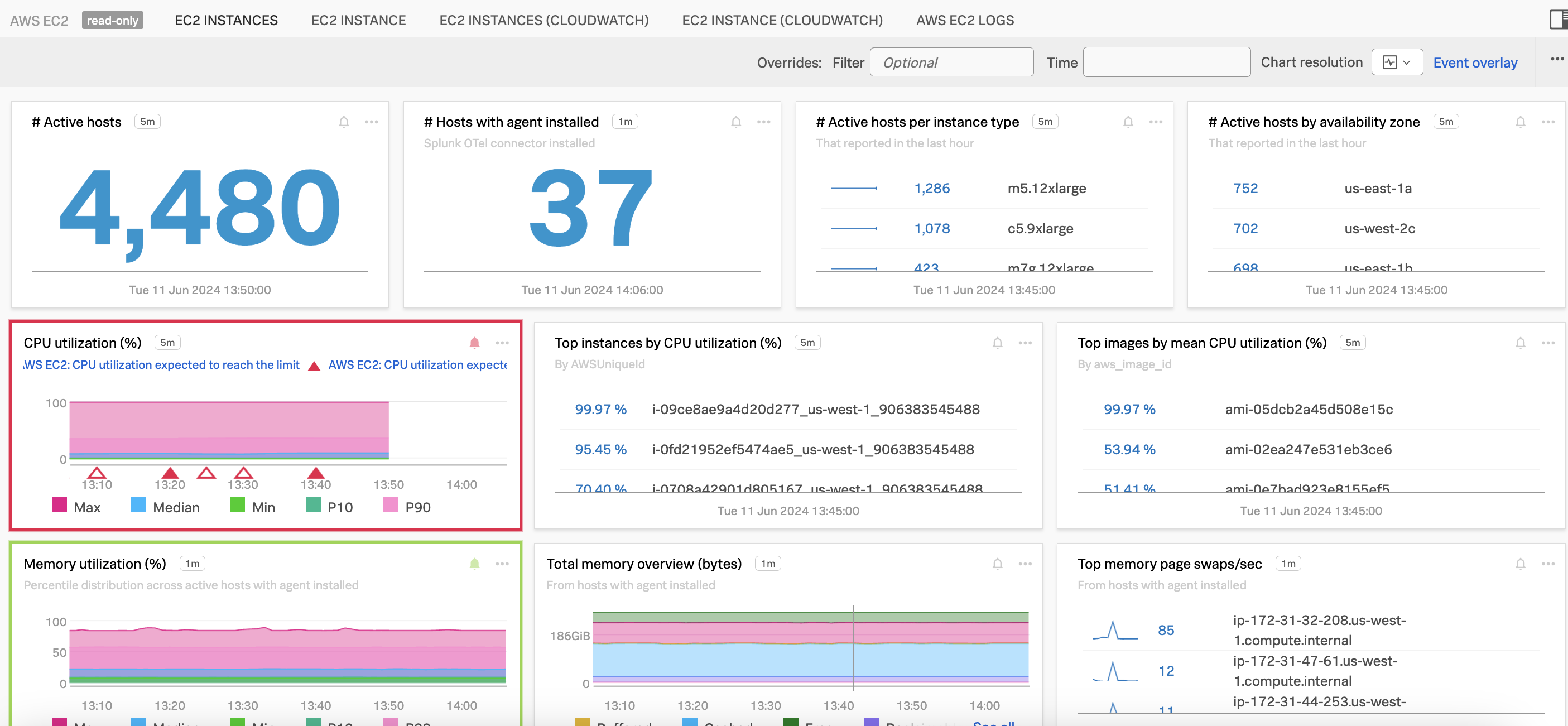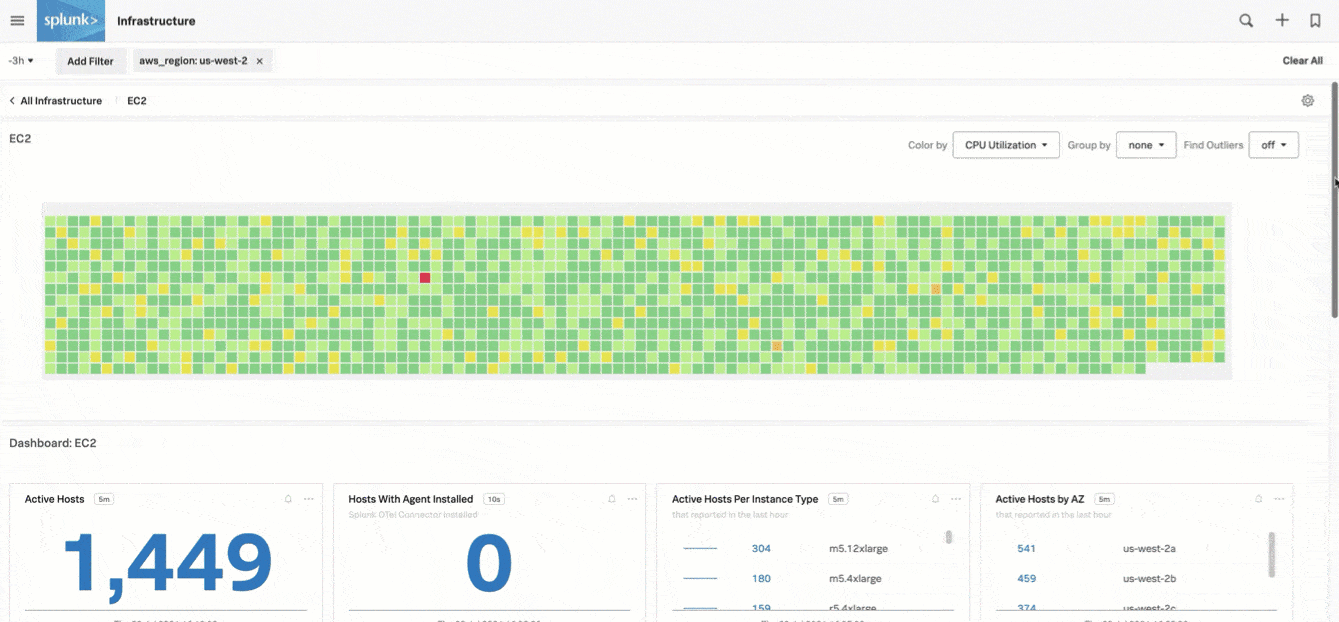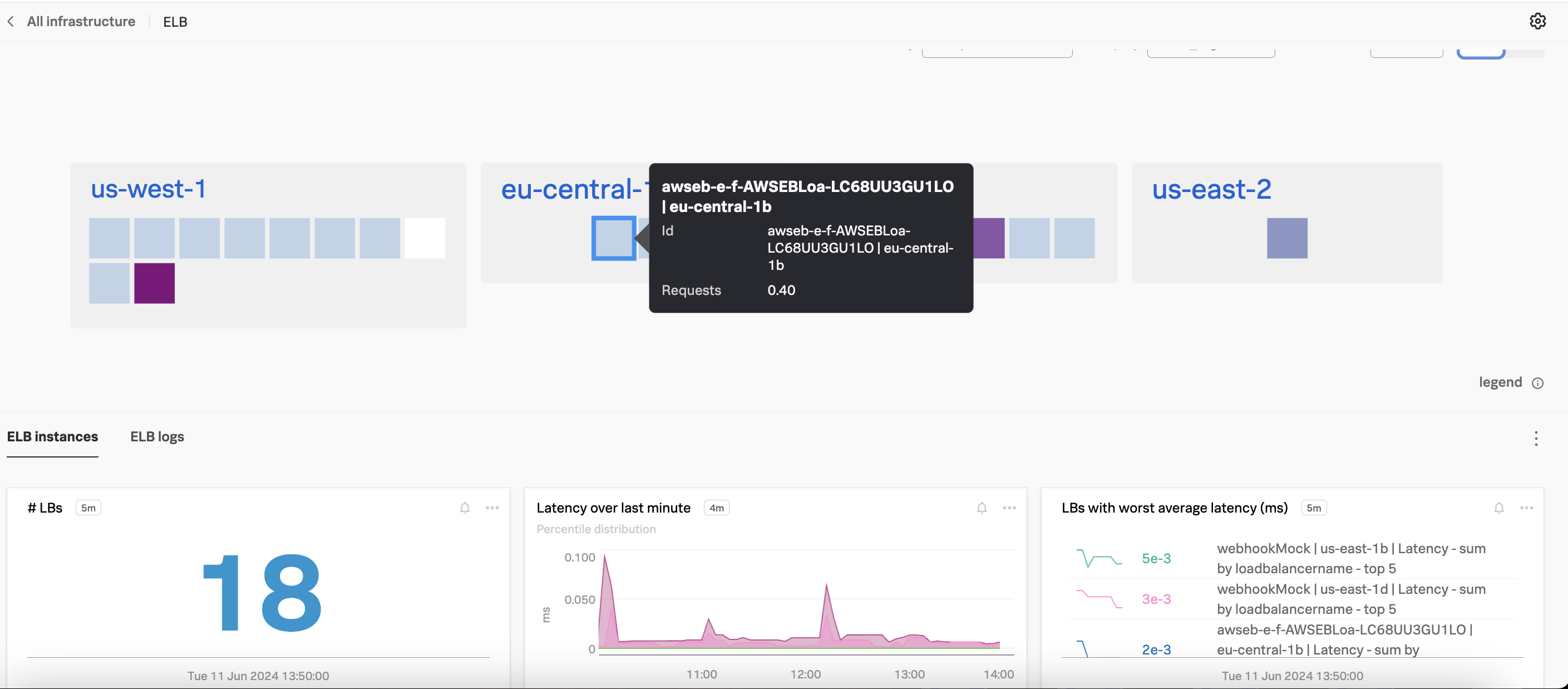パート1: インフラストラクチャとクラウドサービスを設定して、Splunk Observability Cloudへデータを送信する 🔗
インフラストラクチャにAWS、GCP、Azureなどのクラウドサービスを使用している場合は、これらのサービスをSplunk Observability Cloudと統合してください。
クラウドサービスインテグレーションにより、Splunk Infrastructure Monitoringにメトリクスとメタデータ (タグ、ラベル、その他のプロパティなど) を送信し、クラウドサービスのデータを詳細に分析できます。
クラウドサービスインテグレーションのメソッドを選択する 🔗
クラウドサービスはさまざまな方法でインテグレーションできます。デフォルトでは、各クラウドサービスのインテグレーションにはSplunk Observability Cloudに関連するセットアップガイドがあります。
好みや現在のセットアップによっては、別の方法を選択することもできます。たとえば、少数のインテグレーションをセットアップする場合は、ガイド付きセットアップを使用します。異なるアカウントや地域に対して多くの統合を設定する場合は、APIまたはTerraformを使用します。
開始するには、クラウドサービスプロバイダーの方法の表からお好みの方法を選択し、セットアップのための関連する指示に従ってください。
アマゾン ウェブ サービス 🔗
Splunkでは、AWSの以下のインテグレーションメソッドをサポートします。
メソッド |
説明 |
手順 |
|---|---|---|
ポーリング(デフォルト) |
AWS CloudWatchのメトリクスを指定したレートでポーリングします。設定するには、Splunk Observability Cloudガイド付きセットアップまたはSplunk APIを使用します。 |
|
ストリーミング(Splunkマネージド) |
AWSからメトリックストリームを収集し、管理します。設定するには、Splunk Observability Cloudガイド付きセットアップまたはSplunk APIを使用します。 |
|
ストリーミング(AWS マネージド) |
AWSからメトリクスストリームに接続し、管理します。設定するには、AWSコンソールを使用します。 |
|
Splunk Terraform |
Terraformを介してインテグレーションを設定し、デプロイすることでAWSに接続します。 |
Google Cloud Platform 🔗
Splunkでは、GCPの以下のインテグレーションメソッドをサポートします。
メソッド |
説明 |
手順 |
|---|---|---|
ガイド付きセットアップ(デフォルト) |
Splunk Observability Cloudのガイド付きセットアップを使用してGCPに接続します。 |
|
Splunk API |
Splunk Observability Cloud APIを使用してGCPに接続します。 |
Google Cloud Platform MonitoringをSplunk Observability Cloudと統合する |
Terraform |
Terraformを介してインテグレーションを設定し、デプロイすることでGCPに接続します。 |
Microsoft Azure 🔗
Splunkでは、Azureの以下のインテグレーションメソッドをサポートします。
メソッド |
説明 |
手順 |
|---|---|---|
ガイド付きセットアップ(デフォルト) |
Splunk Observability Cloudのガイド付きセットアップを使用してAzureに接続します。 |
|
Splunk API |
Splunk Observability Cloud APIを使用してAzureに接続します。 |
|
Terraform |
Terraformを介してインテグレーションを設定し、デプロイすることでAzureに接続します。 |
Splunk Observability Cloudでクラウドサービスにアクセスする 🔗
クラウドサービスをSplunk Observability Cloudに統合したら、次の方法でデータにアクセスできます:
ナビゲーター、ダッシュボード、またはメトリクスファインダーでデータを確認できれば、インテグレーションはうまくいっています。
クラウドサービスの組み込みダッシュボードでメトリクスを表示する 🔗
Splunk Observability Cloudは、クラウドサービスに関連する重要なデータを可視化する組み込みダッシュボードを提供します。
例えば、」AWS EC2 「ビルトインダッシュボードグループには、EC2データを視覚化したダッシュボードが含まれています:

クラウドサービスを監視するために内蔵ダッシュボードを使用する方法について詳しくは、クラウドサービスの組み込みダッシュボードでメトリクスを表示する を参照してください。
メトリクスファインダーを使ってメトリクスを検索する 🔗
メトリクスファインダーを使用して、クラウドサービスメトリクスを検索できます。詳細は、メトリクス・ファインダーでメトリクスを検索する を参照してください。
各クラウドサービスが提供するメトリクスのリストについては、以下を参照してください:
次のステップ 🔗
次に、Splunk Observability Cloudのインフラストラクチャの設定を続行するには、パート2:OpenTelemetry Collectorをインストールして、サーバーとクラスターのデータを送信する を参照してください。

